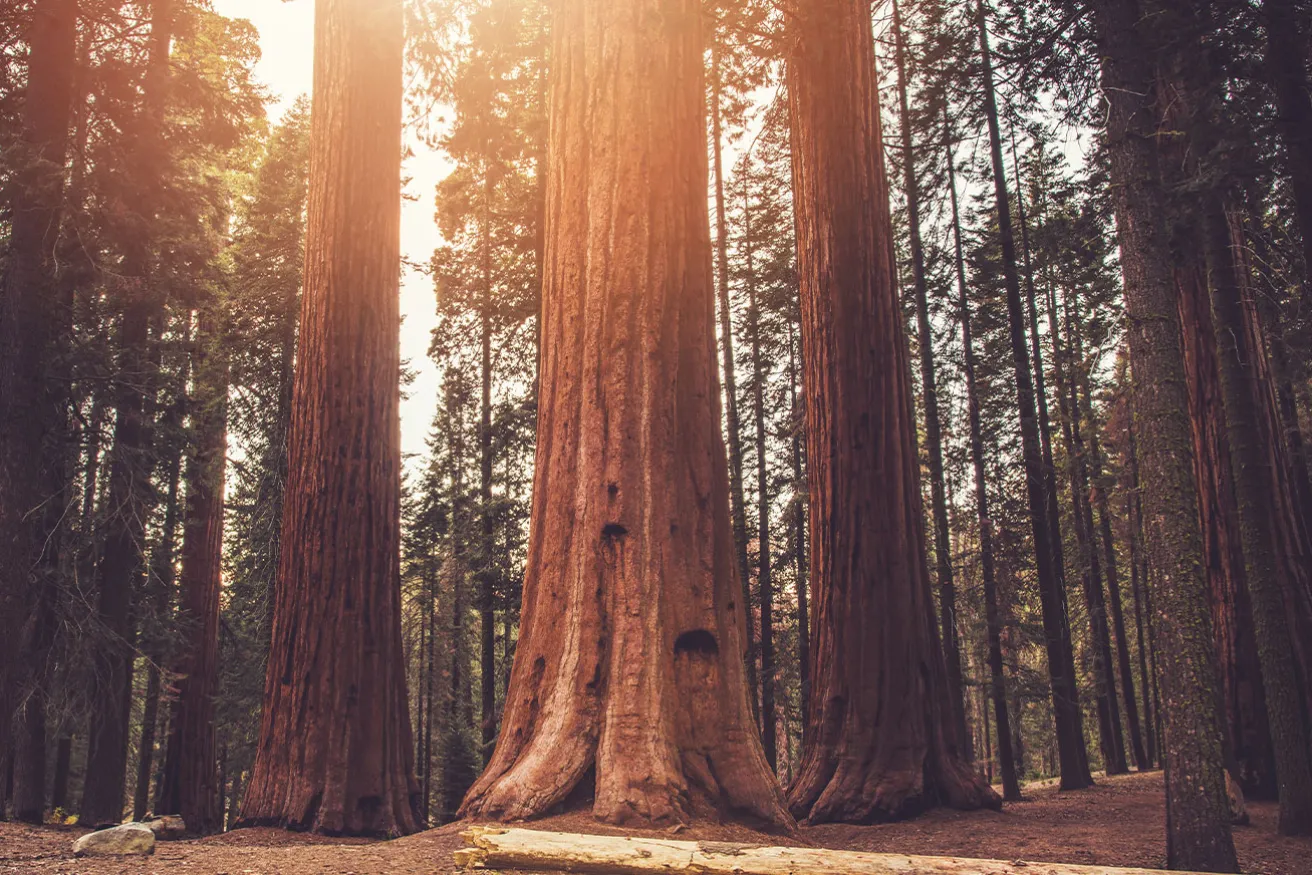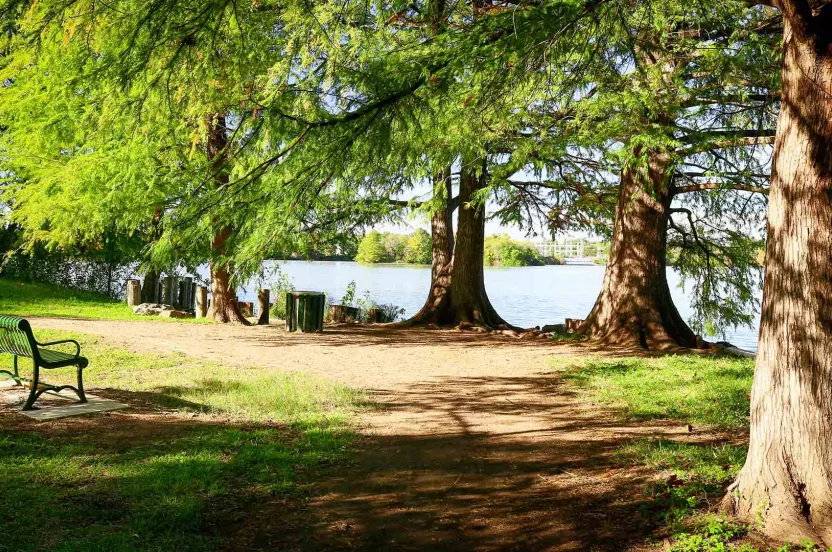Now live: The 2025 Canopy Report. Learn how Americans see trees. GET THE REPORT
Are Some Trees Fire-Resistant? Actually, Yes.
Meet 6 trees that are defying flames.
May 16, 2024

Can a tree be resistant to fire?
It may seem counterintuitive to think a tree can be flame resistant. After all, trees are made of wood. Yet, some species are considered just that. This paradoxical trait is partly why the giant sequoias have lasted so long in California — where wildfires are simply part of the landscape of the American Pacific West — and why longleaf pine forests in the American Southeast actually thrive with regular intervals of fire.
So, what exactly makes a tree fire-resistant?
While all of the trees listed below are considered fire-resistant, each has its own characteristics that make it more likely to survive a fire. But there are some common features.
- Thick bark protects the inner layer of the tree that’s actively growing (known as cambium).
- High moisture content in the wood or leaves means they will not burn as intensely or as quickly.
- A lack of branches low to the ground prevents flames from climbing into the treetops.
Fire-resistant trees for the forest
A beloved giant of the forest, this tree was once thought to be fireproof — and it’s easy to see why. Giant sequoia bark can get as much as three feet thick, completely sheltering the growing cambium layer of the tree from damage. Branches also begin high up on the trunk, preventing fire from moving up into the tree canopy. These traits were developed over thousands of years through repeated exposure to low-intensity fires. One additional fire-related trait is the tree’s cones. They open up when exposed to heat, allowing their seeds to sprout and take root on bare soil that has been cleared of needles and other organic material.
This large evergreen has thrived in western forests for generations, and its ability to survive fire is important in these landscapes. The tree’s thick bark can get up to three inches thick and protects the cambium layer from heat. New buds are covered with protective bud scales. Deep roots mean the soil can provide insulation from a blaze. An open branching structure and needles with high moisture content also help keep the tree from burning.
In the Mediterranean, olive trees are a common sight. Turns out this tree also falls into the fire-resistant category. The thick, almost leathery leaves don’t readily burn, and branches are spread out. The olive tree also retains a lot of moisture, which has a similar effect in a wildfire as wet logs in a campfire. This species is even currently being planted in its native range to restore forestland taken out by wildfires.
Many types of oak trees offer some level of fire resistance, but the cork oak is a standout. This tree is also native to the Mediterranean and — as its name suggests — is the source of cork used in a number of products, including wine corks. The bark is key to a cork oak surviving fire. It’s a thick, honeycomb-like barrier protecting the tree’s living layer. And this means the tree can quickly recover and regrow after a wildfire.
Native to California, this evergreen oak offers plenty of fire-resistant features. Bark is again at the top of the list, with the coast live oak’s thick, deeply furrowed bark providing protection. Its thick, leathery leaves are slow to burn. The roots are also insulated by a corky layer, meaning this tree’s root system rarely experiences heat damage. And should the tree be damaged in a fire, it will sprout and regrow readily.
This is a tree that thrives with regular exposure to low-intensity fires. Like other fire-resistant trees, the longleaf pine has thick bark to protect its cambium layer. In addition, smaller fires will naturally prune lower branches and prevent larger flames from reaching the canopy. Even as a small seedling — when it looks more like a clump of grass than a tree — long needles protect the growing tip of the tree by absorbing and deflecting heat from a fire.



